Technology
Best Router Deals: Save on Mesh Networks and Wi-Fi 6 Routers
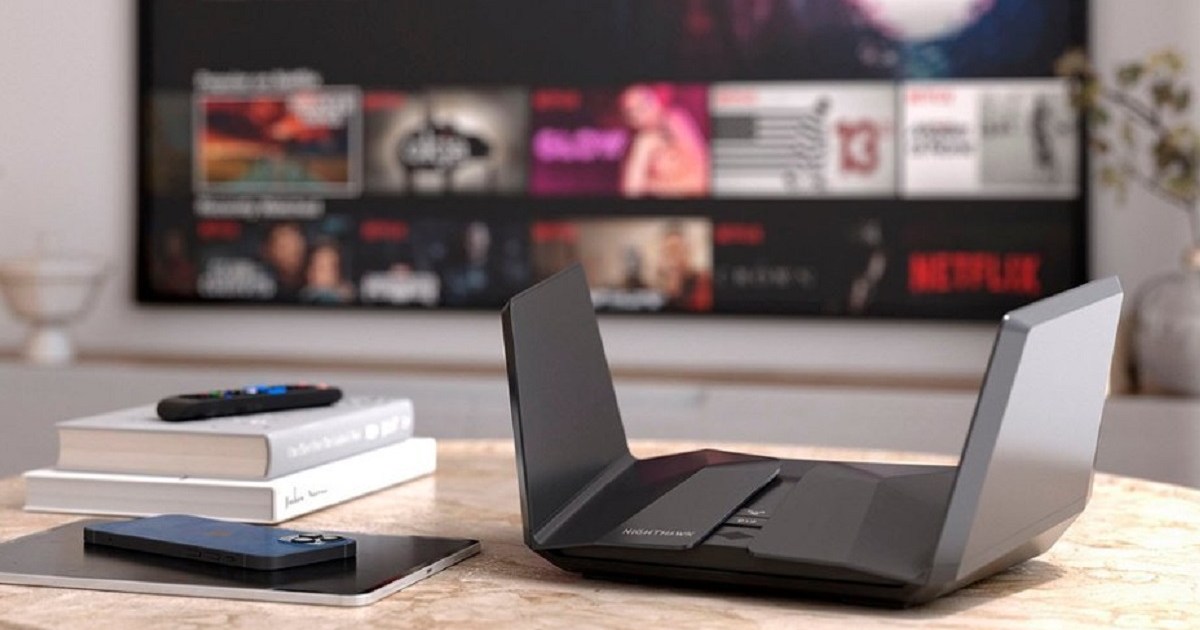
These days, almost every single device out there can connect to the internet, and if you have an older router, then you may be struggling with things like slow speed or the connection dropping regularly. Luckily, a modern router can fix a lot of these issues, especially those that come with the latest Wi-Fi 6 standard and later, since those are made specifically to handle multiple connections. Not only that, but another great option is to grab a mesh router system, which is great if you want coverage for a larger house without having to create access points or use repeaters.
Of course, there are a lot of routers to pick from out there, and if you don’t have a lot of tech-savvy, it can be overwhelming. That’s why we’ve gone out and found our favorite router deals that will give you the best bang for your buck, and that includes mesh router deals too. So if you’ve just picked up some smart home devices from Google Nest deals or Amazon Echo deals, or you need to lower your ping so you can enjoy gaming PC deals and gaming console deals to their fullest, check out the options below.
Best Router Deals
Linksys AX3000 Mesh — $80 $180 56% off
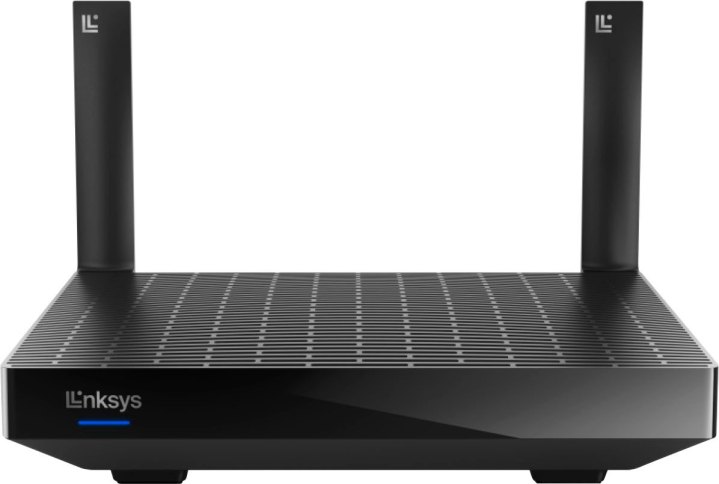
Another great option that can run at the combined speed of 3Gbps, the Linksys AX3000 Mesh has a bit more coverage, up to 2,000 square feet, and is a solid option if you need a bit more performance out of your router. It follows the Wi-Fi 6 standard and can connect up to 30 devices, which should be more than enough for the average home, especially if you use a smart bridge or smart hub for your smart home devices. Also, one benefit of the Linksys AX3000 Mesh is that you can also use it as a mesh system if you buy more than one. It’s worth noting that the only way to get this deal is if you have a My Best Buy Plus or Total subscription.
TP-Link Archer AX3000 — $111 $130 15% off
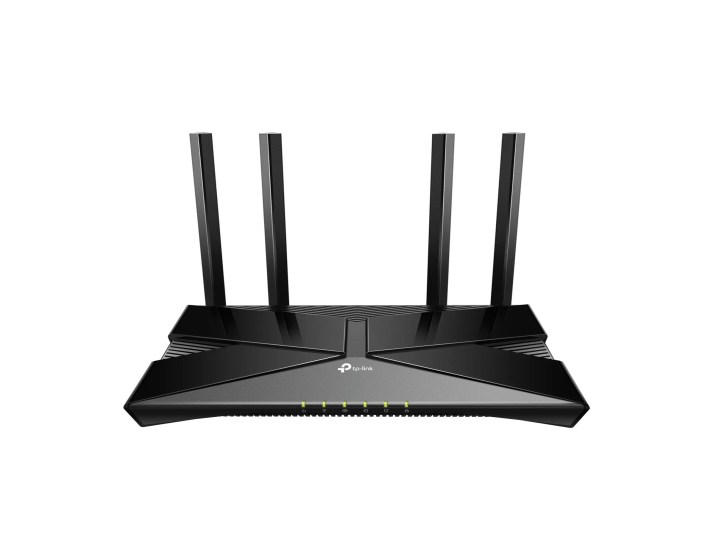
Upgrading to the newer Wi-Fi 6 standard doesn’t have to cost an arm and a leg, especially if you aren’t planning to use it for anything as intense as gaming, which is where the TP-Link Archer AX3000 comes in. It can hit a combined speed of 3Gbps over its two bands and will work wonderfully if you mostly plan to use it to stream content or connect your tablet and phone. It also comes with OFDMA technology, which essentially lets you connect to a lot of devices without experiencing issues, so if you have a lot of smart home devices, this will work great for that too.
Linksys Hydra Pro AXE6600 — $150 $280 46% off
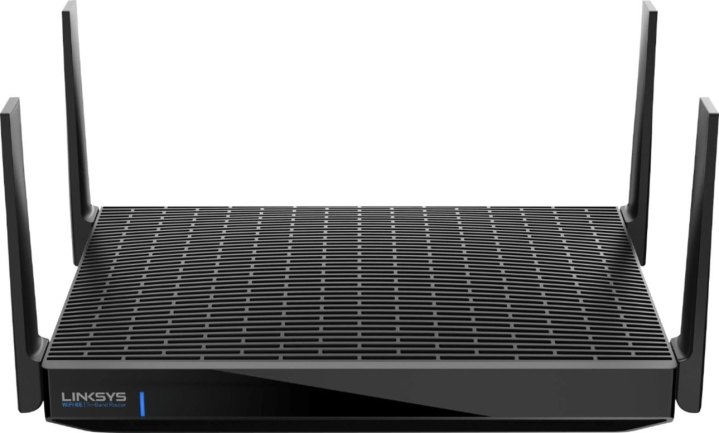
If you want to get the latest Wi-Fi standard, that’s going to be Wi-Fi 6E, which is optimized for connecting with lots of devices using MU-MIMO technology so that you can connect up to a whopping 55 devices at the same time. Not only that, but this comes with a 5 Gigabit WAN port, so its also another great option if you rely heavily on your network for sharing files or watching content on something like a Plex server. That said, coverage isn’t as expansive as some of the cheaper options, coming out to around 2,700 square feet, which is still pretty good if we’re being honest.
ASUS AX5700 — $205 $250 20% off
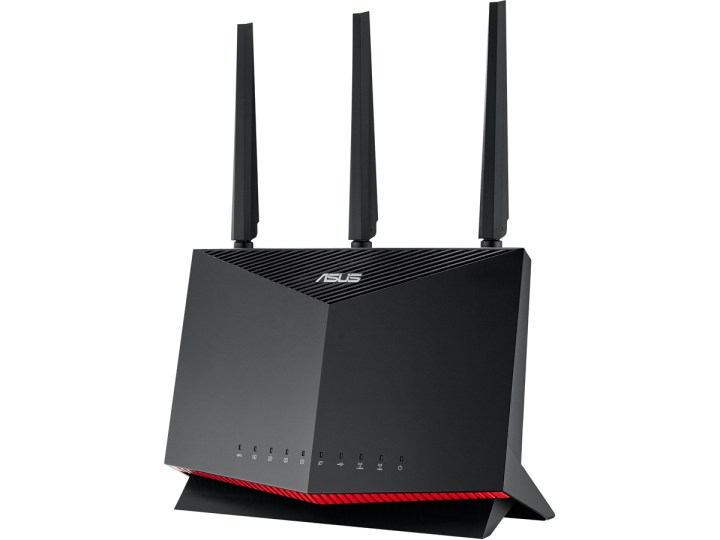
If you have a larger home and need a lot more coverage, then you’ll want to go for the ASUS AX5700, which has a massive 5,000 square-foot coverage and is one of the biggest you’ll find on the market. It can go up to 6000 Mbps combined across all its bands, and even better, it has a 2.5 Gigabit ethernet port, so if you heavily rely on something like a network-attached storage, this is a solid solution. It’s also a great router if you want to game, since it can prioritize gaming connections to help keep lag and other forms of latency down.
ASUS ROG Rapture GT-AX11000 Pro — $327 $400 18% off
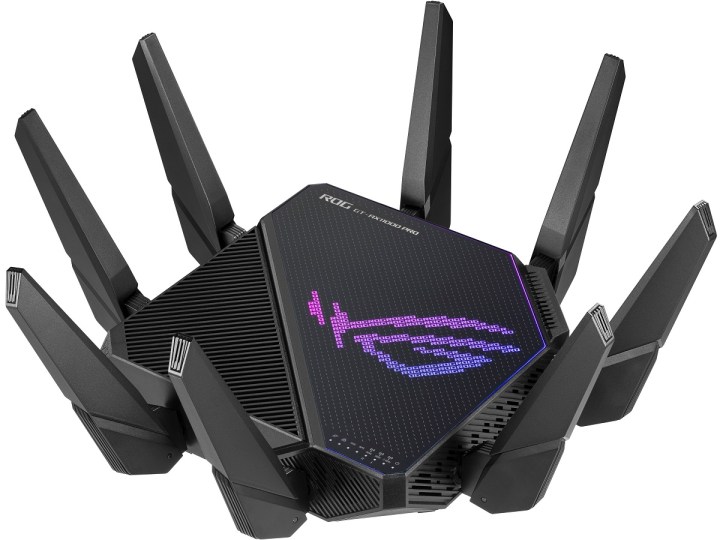
If you take your gaming very seriously, then you may want to consider going for the ASUS ROG Rapture GT-AX11000 Pro, which certainly looks like it’s come out of a sci-fi game set in a few hundred years. It has a very impressive 5,400 square feet of coverage, which even rivals some mesh routes, can handle a whopping combined speed of 11,000 Mbps, and even has a 2.5 Gigabit ethernet port, so it can go incredibly fast. It’s also optimized to provide a clear signal and try its best to decrease latency so that you have a smooth gaming experience. It is worth noting that you need a My Best Buy Plus membership to get this discount.
Best Mesh Router Deals
TP-Link Deco M5 Mesh WiFi System (2-pack) — $99 $115 13% off

A good starter set of mesh routers is this 2-pack of TP-Link Deco M5 which can cover an impressive 3,800 square feet and is great if you have a plan that can reach up to 450Mbps. Even better, each of the Deco M5s comes with a 2.5 Gigbit ethernet port, so you can get faster transfer speeds inside your home, which is very handy. Beyond that, this mesh system can connect up to 100 devices which should be more than enough for the average home, even one that is chock full of smart home devices.
TP-Link Deco X20 WiFi 6 Mesh System (3-pack) — $140 $180 22% off

If you want to ensure fast wifi speeds, these TP-Link Deco X20s support wired ethernet backhaul, and with a 2.5 Gigabit ethernet port, you can keep your Wi-Fi speeds pretty fast. In terms of coverage, this 3-pack can cover 5,800 square feet and can connect to a whopping 150 different devices, so it’s very forward-facing if you plan to add a bunch of extra smart devices.
Linksys Atlas Pro 6 (3-pack) — $228 $350 20% off

Luckily, if you’re trying to cover a huge area, you don’t need to spend several hundred dollars, as this three-pack from Linksys can manage a whopping 8,100 square feet of coverage. It has a combined top-speed of 5.4Gbps for Wi-Fi and 1Gbps for wired, although it’s worth noting you won’t likely be getting anywhere near those Wi-Fi numbers, especially as you get further away from the base stations. Even so, if you have a gigabit internet connection, you should be able to use it to capacity on this mesh network.
NETGEAR Orbi Whole Home Tri-band Mesh WiFi 6 System (2-pack) — $399 $450 11% off
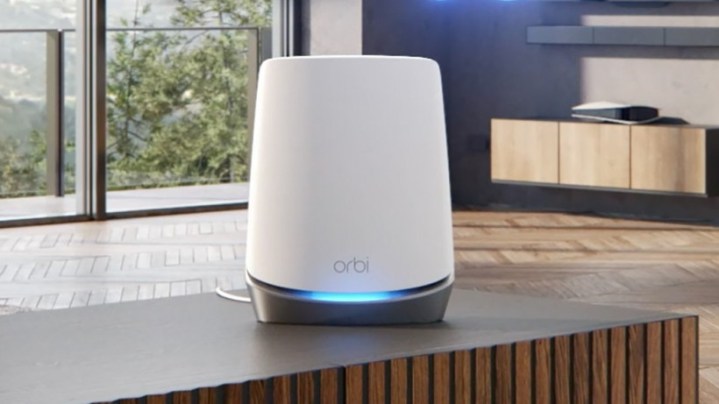
If you have a really fast internet connection in the Gigabit range, then you’ll want a high-end mesh router system like the NETGEAR Orbi, which can handle up to 4,200 Gbps across all its bands. It also has an impressive 5,000 square feet of coverage for just two devices, and you could always get the 3-pack which covers up to 7,500 feet if you need a lot more coverage. That said, the 2-pack can only connect up to 40 devices, which is still a lot, but if you plan to add a lot more smart home devices or other things that need internet, that may be a problem.
NETGEAR Nighthawk AXE5700 Tri-Band Mesh Wi-Fi System (3-Pack) — $358 $550 35% off
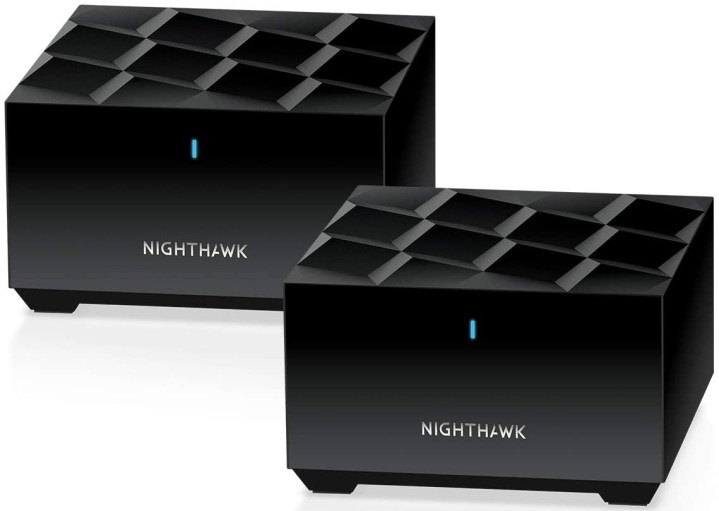
If you have a really large space that you need to cover, this 3-pack of the NETGEAR Nighthawk AXE5700 can handle a space up to 7,500 square feet, as well as a combined speed of 5,700 Gbps, so it’s pretty fast for internal networking needs. They also come with 2.5 Gigabit ethernet ports if you’d like to go for the wired option as well, so there’s a lot of versatility you can take advantage of. The NETGEAR Nighthawk AXE5700 can also handle connecting up to 100 devices, which is a lot, although it would have been nice if it could match the TP-Link Deco X20 for this price point.
How to Choose the Right Router
When it comes to picking a router, the most important thing to focus on is what sort of speeds you’re expecting to get. On most routers or mesh systems, you’ll notice the term ‘AX’ followed by a set of numbers, which signifies its top speeds in megabits per second. Now, in reality, if you’re connecting through an ethernet cable, it won’t really matter what speeds you get since very few homes actually hit or go above 1,000 Mbps. Instead, where this number makes a difference is in the wireless connection since the faster it can go wirelessly, the further it can reach, at least in theory. The big problem is that AX number tends to be the combined speed of all frequencies or antennas, so it can be a bit of a difficult system to decipher. That said, it’s a good rule of thumb when shopping, and then when you find something you like, go in and check the actual speeds for each band, 2.4Ghz and 5Ghz, and what sort of speeds it can deliver.
Another thing to consider is the sort of technology it has under the hood. For example, as mentioned earlier, if you’re buying a new router, you really should opt for Wi-Fi 6 or the newer Wi-Fi 6e, although the latter might be a bit harder to find. You should also check for things like MU-MIMO, a connectivity tech that allows several devices to connect simultaneously without impacting the speeds or quality of the internet.
Technology
Microsoft & OpenAI are paying millions to outlets to implement AI
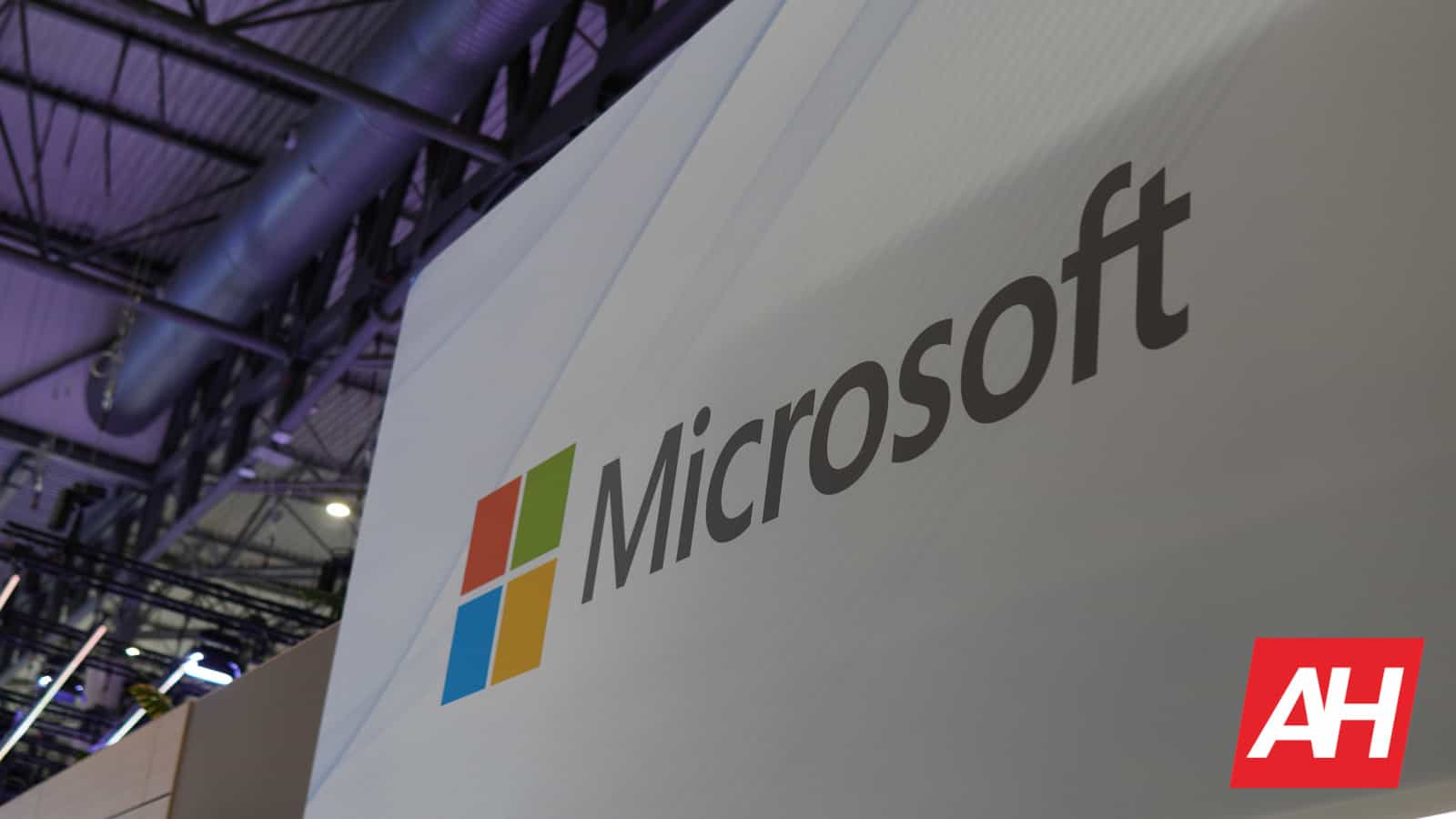
The tech industry seems to have decided that AI-powered developments are the future. Major improvements in efficiency and process automation helped the rapid establishment of this approach. Part of the industry’s new path is to try to promote the implementation of AI in all possible segments. Currently, Microsoft and OpenAI are paying millions of dollars to media outlets to implement AI tools.
Microsoft and OpenAI paying up to $10 million to media outlets to use AI tools
Artificial intelligence can be quite convenient for the journalism segment. It is especially efficient in tasks such as summarizing or transcribing content, to name a few examples. It also functions effectively in certain proofreading services, enhancing the quality of your writing. To illustrate this, the Microsoft and OpenAI project aims to provide newsrooms with access to the experience while simultaneously receiving funding.
Microsoft will carry out the project in rounds, selecting a few outlets in each one. The first round of the program will offer funding to Newsday, The Minnesota Star Tribune, The Philadelphia Inquirer, Chicago Public Media, and The Seattle Times. The $10 million is broken down into $2.5 million in cash and $2.5 million in “software and enterprise credits” from Microsoft and OpenAI each.
The program involves hiring an intern for a two-year period. The fellow will deploy AI-powered tools using Microsoft Azure and OpenAI credits in the media outlet. The tools are not designed to replace writers or researchers. Rather, the project seeks to develop tools that assist them and increase their efficiency.
“While nothing will replace the central role of reporters, we believe that AI technology can help in the research, investigation, distribution, and monetization of important journalism,” said Tom Rubin, the head of intellectual property and content at OpenAI. In addition to the latter and Microsoft, the Lenfest Institute for Journalism is a driving force behind the project.
Copyright lawsuits are still pending
Notably, Microsoft and OpenAI are currently facing lawsuits over copyrights on content used to train AI models. The companies have already reached agreements with some major platforms, such as Vox Media. However, there is still a list of big names seeking compensation they deem appropriate for using their content. The list includes “The New York Times, The Intercept, Raw Story, AlterNet, the Center for Investigative Reporting, and Alden Global Capital, the hedge fund behind the New York Daily News and the Chicago Tribune,” as reported by The Verge.
Technology
Amazon is reportedly working on a low-cost storefront to rival Temu

Amazon may be working on a secondary online sales platform that would compete with the absurdly low prices of Chinese retailer Temu. The Information that it has seen internal information sent to Amazon merchants that detail some of the price caps for this new storefront.
The outlet claims the upper limit of prices are set at $8 for jewelry, $9 for bedding, $13 for guitars and $20 for sofas that are shipped from its fulfillment center in Guangdong, China under this new “Low-Cost Store.” According to the site’s sources, orders from this storefront would have slower shipping timelines of nine to 11 days, but would also charge lower fulfillment fees to sellers. A seller would be charged between $1.77 and $2.05 to ship a 4-8 ounce item through the Low-Cost Store, compared with a $2.67 to $4.16 charge for an item of that weight shipped under Fulfillment by Amazon from a domestic warehouse, according to The Information.
Amazon has not set price limits on its eponymous online storefront, so this new platform will be a markedly different strategy from its usual approach. It’s more in line with the pricing policy followed by Temu, which launched in 2022. In just two years, the bargain basement ecommerce platform has garnered a reputation for selling items of as well as questions about relying on .
Technology
Runway Act-One: AI motion capture with your smartphone camera

Join our daily and weekly newsletters for the latest updates and exclusive content on industry-leading AI coverage. Learn More
AI video has come incredibly far in the years since the first models debuted in late 2022, increasing in realism, resolution, fidelity, prompt adherence (how well they match the text prompt or description of the video that the user typed) and number.
But one area that remains a limitation to many AI video creators — myself included — is in depicting realistic facial expressions in AI generated characters. Most appear quite limited and difficult to control.
But no longer: today, Runway, the New York City-headquartered AI startup backed by Google and others, announced a new feature “Act-One,” that allows users to record video of themselves or actors from any video camera — even the one on a smartphone — and then transfers the subject’s facial expressions to that of an AI generated character with uncanny accuracy.

The free-to-use tool is gradually rolling out “gradually” to users starting today, according to Runway’s blog post on the feature.
While anyone with a Runway account can access it, it will be limited to those who have enough credits to generate new videos on the company’s Gen-3 Alpha video generation model introduced earlier this year, which supports text-to-video, image-to-video, and video-to-video AI creation pipelines (e.g. the user can type in a scene description, upload an image or a video, or use a combination of these inputs and Gen-3 Alpha will use what its given to guide its generation of a new scene).
Despite limited availability right now at the time of this posting, the burgeoning scene of AI video creators online is already applauding the new feature.
As Allen T. remarked on his X account “This is a game changer!”
It also comes on the heels of Runway’s move into Hollywood film production last month, when it announced it had inked a deal with Lionsgate, the studio behind the John Wick and Hunger Games movie franchises, to create a custom AI video generation model based on the studio’s catalog of more than 20,000 titles.
Simplifying a traditionally complex and equipment-heavy creative proccess
Traditionally, facial animation requires extensive and often cumbersome processes, including motion capture equipment, manual face rigging, and multiple reference footages.
Anyone interested in filmmaking has likely caught sight of some of the intricacy and difficulty of this process to date on set or when viewing behind the scenes footage of effects-heavy and motion-capture films such as The Lord of the Rings series, Avatar, or Rise of the Planet of the Apes, wherein actors are seen covered in ping pong ball markers and their faces dotted with marker and blocked by head-mounted apparatuses.
Accurately modeling intricate facial expressions is what led David Fincher and his production team on The Curious Case of Benjamin Button to develop whole new 3D modeling processes and ultimately won them an Academy Award, as reported in a prior VentureBeat report.
Yet in the last few years, new software and AI-based startups such as Move have sought to reduce the equipment necessary to perform accurate motion capture — though that company in particular has concentrated primarily on full-body, more broad movements, whereas Runway’s Act-One is focused more on modeling facial expressions.
With Act-One, Runway aims to make this complex process far more accessible. The new tool allows creators to animate characters in a variety of styles and designs, without the need for motion-capture gear or character rigging.
Instead, users can rely on a simple driving video to transpose performances—including eye-lines, micro-expressions, and nuanced pacing—onto a generated character, or even multiple characters in different styles.
As Runway wrote on its X account: “Act-One is able to translate the performance from a single input video across countless different character designs and in many different styles.”
The feature is focused “mostly” on the face “for now,” according to Cristóbal Valenzuela, co-founder and CEO of Runway, who responded to VentureBeat’s questions via direct message on X.
Runway’s approach offers significant advantages for animators, game developers, and filmmakers alike. The model accurately captures the depth of an actor’s performance while remaining versatile across different character designs and proportions. This opens up exciting possibilities for creating unique characters that express genuine emotion and personality.
Cinematic realism across camera angles
One of Act-One’s key strengths lies in its ability to deliver cinematic-quality, realistic outputs from various camera angles and focal lengths.
This flexibility enhances creators’ ability to tell emotionally resonant stories through character performances that were previously hard to achieve without expensive equipment and multi-step workflows.
The tool’s ability to faithfully capture the emotional depth and performance style of an actor, even in complex scenes.
This shift allows creators to bring their characters to life in new ways, unlocking the potential for richer storytelling across both live-action and animated formats.
While Runway previously supported video-to-video AI conversion as previously mentioned in this piece, which did allow users to upload footage of themselves and have Gen-3 Alpha or other prior Runway AI video models such as Gen-2 “reskin” them with AI effects, the new Act-One feature is optimized for facial mapping and effects.
As Valenzuela told VentureBeat via DM on X: “The consistency and performance is unmatched with Act-One.”
Enabling more expansive video storytelling
A single actor, using only a consumer-grade camera, can now perform multiple characters, with the model generating distinct outputs for each.
This capability is poised to transform narrative content creation, particularly in indie film production and digital media, where high-end production resources are often limited.
In a public post on X, Valenzuela noted a shift in how the industry approaches generative models. “We are now beyond the threshold of asking ourselves if generative models can generate consistent videos. A good model is now the new baseline. The difference lies in what you do with the model—how you think about its applications and use cases, and what you ultimately build,” Valenzuela wrote.
Safety and protection for public figure impersonations
As with all of Runway’s releases, Act-One comes equipped with a comprehensive suite of safety measures.
These include safeguards to detect and block attempts to generate content featuring public figures without authorization, as well as technical tools to verify voice usage rights.
Continuous monitoring also ensures that the platform is used responsibly, preventing potential misuse of the tool.
Runway’s commitment to ethical development aligns with its broader mission to expand creative possibilities while maintaining a strong focus on safety and content moderation.
Looking ahead
As Act-One gradually rolls out, Runway is eager to see how artists, filmmakers, and other creators will harness this new tool to bring their ideas to life.
With Act -ne, complex animation techniques are now within reach for a broader audience of creators, enabling more people to explore new forms of storytelling and artistic expression.
By reducing the technical barriers traditionally associated with character animation, the company hopes to inspire new levels of creativity across the digital media landscape.
It also helps Runway stand out and differentiate its AI video creation platform against the likes of an increasing swath of competitors, including Luma AI from the U.S. and Hailuo and Kling from China, as well as open source rivals such as Genmo’s Mochi 1, which also just debuted today.
Source link
Technology
Feds clear way for EVTOL startups to bring flying vehicles to U.S. airspace

Federal regulators have cleared the path for electric vertical takeoff and landing aircraft to share U.S. airspace with planes and helicopters — a win for the burgeoning industry and a timely decision for startups like Joby Aviation and Archer Aviation that are expected to launch air taxi networks commercially in 2025.
The Federal Aviation Administration published Tuesday its much-anticipated final ruling on the integration of “powered-lift” vehicles, a category the FAA revived two years ago to accommodate eVTOLs and one that describes aircraft that can take off and land like helicopters but then transition to forward flight like airplanes.
“Powered-lift aircraft are the first new category of aircraft in nearly 80 years and this historic rule will pave the way for accommodating wide-scale Advanced Air Mobility (AAM) operations in the future,” FAA Administrator Mike Whitaker said in a statement. Whitaker announced the rule during the NBAA-Business Aviation Convention & Exhibition in Las Vegas.
The ruling also contains guidelines for pilot training and clarifies operating rules. For example, aside from a new type of powered-lift pilot certification, the ruling includes an expanded ability for operators to train and qualify pilots using flight simulation training devices.
The operating rules are tailored specifically to powered-lift vehicles and, as such, allow eVTOLs the flexibility to switch between helicopter and airplane rules as needed.
Joby, Archer, Beta Technologies, and Wisk Aero — which are building aircraft for urban air taxi networks, defense, cargo, and medical logistics — have worked closely with the FAA since 2022 to develop this new set of rules for training, operations, and maintenance.
“[The ruling] aligns with all the hopes that we had been designing for,” Greg Bowles, head of government affairs at Joby Aviation, told TechCrunch. “So the way that we’ve designed the operating system, the cockpit we’ve designed, the way we’ve designed for energy reserves, all align with the FAA rule.”
Bowles also noted that Joby will be able to begin commercial operations once it receives its type certification from the FAA, which means the design of the startup’s aircraft and other major aircraft components meet required safety and airworthiness standards. Joby is in the fourth of five stages of type certification, and recently received a $500 million capital injection from Toyota to help it get across the finish line.
Technology
Kevin Bacon, Kate McKinnon, and other creatives warn of ‘unjust’ AI threat

Thousands of creatives, including famous actors like Kevin Bacon and Kate McKinnon, along with other actors, authors, and musicians, have signed a statement warning that the unpermitted use of copyrighted materials to train AI models threatens the people who made those creative works. 11,500 names are on the list of signatories so far.
Here is the one-sentence statement:
“The unlicensed use of creative works for training generative AI is a major, unjust threat to the livelihoods of the people behind those works, and must not be permitted.”
The statement was published by Fairly Trained, a group advocating for fair training data use by AI companies. Fairly Trained CEO Ed Newton-Rex told The Guardian that generative AI companies need “people, compute, and data” to build their models, and while they spend “vast sums” on the former two, they “expect to take the third – training data – for free.” Newton-Rex founded Fairly Trained after he quit Stability AI, accusing generative AI of “exploiting creators.”
There are also some notable names not appearing among the signatories. Scarlett Johansson, who had a high-profile spat with OpenAI after accusations it modeled GPT-4o’s voice after her, isn’t on the list. Neither are actors like Dame Judi Dench and John Cena, who signed up to have Meta AI’s voice chat system replicate them.
Technology
Kevin Bacon, Kate McKinnon, and other creatives warn of ‘unjust’ AI threat

Thousands of creatives, including famous actors like Kevin Bacon and Kate McKinnon, along with other actors, authors, and musicians, have signed a statement warning that the unpermitted use of copyrighted materials to train AI models threatens the people who made those creative works. 11,500 names are on the list of signatories so far.
Here is the one-sentence statement:
“The unlicensed use of creative works for training generative AI is a major, unjust threat to the livelihoods of the people behind those works, and must not be permitted.”
The statement was published by Fairly Trained, a group advocating for fair training data use by AI companies. Fairly Trained CEO Ed Newton-Rex told The Guardian that generative AI companies need “people, compute, and data” to build their models, and while they spend “vast sums” on the former two, they “expect to take the third – training data – for free.” Newton-Rex founded Fairly Trained after he quit Stability AI, accusing generative AI of “exploiting creators.”
There are also some notable names not appearing among the signatories. Scarlett Johansson, who had a high-profile spat with OpenAI after accusations it modeled GPT-4o’s voice after her, isn’t on the list. Neither are actors like Dame Judi Dench and John Cena, who signed up to have Meta AI’s voice chat system replicate them.
-

 Science & Environment1 month ago
Science & Environment1 month agoHyperelastic gel is one of the stretchiest materials known to science
-

 Technology4 weeks ago
Technology4 weeks agoIs sharing your smartphone PIN part of a healthy relationship?
-

 Science & Environment1 month ago
Science & Environment1 month ago‘Running of the bulls’ festival crowds move like charged particles
-

 Science & Environment1 month ago
Science & Environment1 month agoHow to unsnarl a tangle of threads, according to physics
-

 Science & Environment1 month ago
Science & Environment1 month agoMaxwell’s demon charges quantum batteries inside of a quantum computer
-

 Technology1 month ago
Technology1 month agoWould-be reality TV contestants ‘not looking real’
-

 Science & Environment4 weeks ago
Science & Environment4 weeks agoX-rays reveal half-billion-year-old insect ancestor
-

 Science & Environment1 month ago
Science & Environment1 month agoSunlight-trapping device can generate temperatures over 1000°C
-

 Science & Environment1 month ago
Science & Environment1 month agoLiquid crystals could improve quantum communication devices
-

 Science & Environment1 month ago
Science & Environment1 month agoQuantum ‘supersolid’ matter stirred using magnets
-

 Womens Workouts4 weeks ago
Womens Workouts4 weeks ago3 Day Full Body Women’s Dumbbell Only Workout
-

 Technology3 weeks ago
Technology3 weeks agoUkraine is using AI to manage the removal of Russian landmines
-

 TV3 weeks ago
TV3 weeks agoসারাদেশে দিনব্যাপী বৃষ্টির পূর্বাভাস; সমুদ্রবন্দরে ৩ নম্বর সংকেত | Weather Today | Jamuna TV
-

 Science & Environment1 month ago
Science & Environment1 month agoLaser helps turn an electron into a coil of mass and charge
-

 Science & Environment1 month ago
Science & Environment1 month agoWhy this is a golden age for life to thrive across the universe
-

 Science & Environment1 month ago
Science & Environment1 month agoQuantum forces used to automatically assemble tiny device
-

 Science & Environment1 month ago
Science & Environment1 month agoA new kind of experiment at the Large Hadron Collider could unravel quantum reality
-

 Football3 weeks ago
Football3 weeks agoRangers & Celtic ready for first SWPL derby showdown
-

 News2 weeks ago
News2 weeks agoNavigating the News Void: Opportunities for Revitalization
-

 News3 weeks ago
News3 weeks agoMassive blasts in Beirut after renewed Israeli air strikes
-

 Science & Environment1 month ago
Science & Environment1 month agoA slight curve helps rocks make the biggest splash
-

 Science & Environment1 month ago
Science & Environment1 month agoNerve fibres in the brain could generate quantum entanglement
-

 Science & Environment1 month ago
Science & Environment1 month agoHow to wrap your mind around the real multiverse
-

 News1 month ago
News1 month ago▶️ Hamas in the West Bank: Rising Support and Deadly Attacks You Might Not Know About
-
Business3 weeks ago
DoJ accuses Donald Trump of ‘private criminal effort’ to overturn 2020 election
-

 Business3 weeks ago
Business3 weeks agoWhen to tip and when not to tip
-

 MMA3 weeks ago
MMA3 weeks agoJulianna Peña trashes Raquel Pennington’s behavior as champ
-

 Science & Environment1 month ago
Science & Environment1 month agoITER: Is the world’s biggest fusion experiment dead after new delay to 2035?
-

 Science & Environment1 month ago
Science & Environment1 month agoTime travel sci-fi novel is a rip-roaringly good thought experiment
-

 News1 month ago
News1 month ago▶️ Media Bias: How They Spin Attack on Hezbollah and Ignore the Reality
-

 Science & Environment1 month ago
Science & Environment1 month agoNuclear fusion experiment overcomes two key operating hurdles
-

 News2 weeks ago
News2 weeks ago▶ Hamas Spent $1B on Tunnels Instead of Investing in a Future for Gaza’s People
-

 Technology3 weeks ago
Technology3 weeks agoMicrophone made of atom-thick graphene could be used in smartphones
-

 Technology3 weeks ago
Technology3 weeks agoSamsung Passkeys will work with Samsung’s smart home devices
-

 Sport3 weeks ago
Sport3 weeks agoWales fall to second loss of WXV against Italy
-

 MMA2 weeks ago
MMA2 weeks ago‘Uncrowned queen’ Kayla Harrison tastes blood, wants UFC title run
-
News1 month ago
the pick of new debut fiction
-

 Science & Environment1 month ago
Science & Environment1 month agoPhysicists have worked out how to melt any material
-

 News1 month ago
News1 month agoOur millionaire neighbour blocks us from using public footpath & screams at us in street.. it’s like living in a WARZONE – WordupNews
-

 Technology4 weeks ago
Technology4 weeks agoWhy Machines Learn: A clever primer makes sense of what makes AI possible
-

 Technology1 month ago
Technology1 month agoMeta has a major opportunity to win the AI hardware race
-

 Sport3 weeks ago
Sport3 weeks agoBoxing: World champion Nick Ball set for Liverpool homecoming against Ronny Rios
-

 MMA3 weeks ago
MMA3 weeks agoPereira vs. Rountree prediction: Champ chases legend status
-

 Sport3 weeks ago
Sport3 weeks agoWorld’s sexiest referee Claudia Romani shows off incredible figure in animal print bikini on South Beach
-

 MMA3 weeks ago
MMA3 weeks agoDana White’s Contender Series 74 recap, analysis, winner grades
-

 Technology3 weeks ago
Technology3 weeks agoMusk faces SEC questions over X takeover
-

 Sport3 weeks ago
Sport3 weeks agoMan City ask for Premier League season to be DELAYED as Pep Guardiola escalates fixture pile-up row
-

 News3 weeks ago
News3 weeks agoFamily plans to honor hurricane victim using logs from fallen tree that killed him
-

 Sport3 weeks ago
Sport3 weeks agoCoco Gauff stages superb comeback to reach China Open final
-

 Sport3 weeks ago
Sport3 weeks agoSturm Graz: How Austrians ended Red Bull’s title dominance
-

 Technology3 weeks ago
Technology3 weeks agoThis AI video generator can melt, crush, blow up, or turn anything into cake
-

 News3 weeks ago
News3 weeks agoGerman Car Company Declares Bankruptcy – 200 Employees Lose Their Jobs
-

 MMA3 weeks ago
MMA3 weeks agoPereira vs. Rountree preview show live stream
-

 News2 weeks ago
News2 weeks agoHeavy strikes shake Beirut as Israel expands Lebanon campaign
-

 TV2 weeks ago
TV2 weeks agoLove Island star sparks feud rumours as one Islander is missing from glam girls’ night
-

 News3 weeks ago
News3 weeks agoHeartbreaking end to search as body of influencer, 27, found after yacht party shipwreck on ‘Devil’s Throat’ coastline
-
Business3 weeks ago
Sterling slides after Bailey says BoE could be ‘a bit more aggressive’ on rates
-

 News3 weeks ago
News3 weeks ago‘Blacks for Trump’ and Pennsylvania progressives play for undecided voters
-

 Money3 weeks ago
Money3 weeks agoWetherspoons issues update on closures – see the full list of five still at risk and 26 gone for good
-

 Technology3 weeks ago
Technology3 weeks agoThe best budget robot vacuums for 2024
-
Business3 weeks ago
Bank of England warns of ‘future stress’ from hedge fund bets against US Treasuries
-

 Business3 weeks ago
Business3 weeks agoChancellor Rachel Reeves says she needs to raise £20bn. How might she do it?
-

 MMA3 weeks ago
MMA3 weeks agoAlex Pereira faces ‘trap game’ vs. Khalil Rountree
-

 TV3 weeks ago
TV3 weeks agoPhillip Schofield accidentally sets his camp on FIRE after using emergency radio to Channel 5 crew
-

 Technology3 weeks ago
Technology3 weeks agoTexas is suing TikTok for allegedly violating its new child privacy law
-

 Science & Environment1 month ago
Science & Environment1 month agoPhysicists are grappling with their own reproducibility crisis
-

 Science & Environment1 month ago
Science & Environment1 month agoA tale of two mysteries: ghostly neutrinos and the proton decay puzzle
-

 Sport3 weeks ago
Sport3 weeks agoChina Open: Carlos Alcaraz recovers to beat Jannik Sinner in dramatic final
-

 Football3 weeks ago
Football3 weeks agoSimo Valakari: New St Johnstone boss says Scotland special in his heart
-

 Technology3 weeks ago
Technology3 weeks agoJ.B. Hunt and UP.Labs launch venture lab to build logistics startups
-

 Sport3 weeks ago
Sport3 weeks agoAaron Ramsdale: Southampton goalkeeper left Arsenal for more game time
-

 TV3 weeks ago
TV3 weeks agoMaayavi (මායාවී) | Episode 23 | 02nd October 2024 | Sirasa TV
-

 Technology3 weeks ago
Technology3 weeks agoPopular financial newsletter claims Roblox enables child sexual abuse
-

 Entertainment3 weeks ago
Entertainment3 weeks ago“Golden owl” treasure hunt launched decades ago may finally have been solved
-

 Technology3 weeks ago
Technology3 weeks agoOpenAI secured more billions, but there’s still capital left for other startups
-

 News3 weeks ago
News3 weeks agoHull KR 10-8 Warrington Wolves – Robins reach first Super League Grand Final
-

 MMA3 weeks ago
MMA3 weeks agoUFC 307 preview show: Will Alex Pereira’s wild ride continue, or does Khalil Rountree shock the world?
-

 Technology2 weeks ago
Technology2 weeks agoThe best shows on Max (formerly HBO Max) right now
-

 News2 weeks ago
News2 weeks agoBalancing India and China Is the Challenge for Sri Lanka’s Dissanayake
-

 Technology3 weeks ago
Technology3 weeks agoEpic Games CEO Tim Sweeney renews blast at ‘gatekeeper’ platform owners
-

 Science & Environment3 weeks ago
Science & Environment3 weeks agoMarkets watch for dangers of further escalation
-

 News3 weeks ago
News3 weeks agoWoman who died of cancer ‘was misdiagnosed on phone call with GP’
-

 Health & fitness3 weeks ago
Health & fitness3 weeks agoNHS surgeon who couldn’t find his scalpel cut patient’s chest open with the penknife he used to slice up his lunch
-

 Technology3 weeks ago
Technology3 weeks agoApple iPhone 16 Plus vs Samsung Galaxy S24+
-
Business3 weeks ago
Head of UK Competition Appeal Tribunal to step down after rebuke for serious misconduct
-
Business3 weeks ago
The search for Japan’s ‘lost’ art
-

 Technology3 weeks ago
Technology3 weeks agoHow to disable Google Assistant on your Pixel Watch 3
-

 Technology3 weeks ago
Technology3 weeks agoA very underrated horror movie sequel is streaming on Max
-

 Sport1 month ago
Sport1 month agoJoshua vs Dubois: Chris Eubank Jr says ‘AJ’ could beat Tyson Fury and any other heavyweight in the world
-

 Technology4 weeks ago
Technology4 weeks agoArtificial flavours released by cooking aim to improve lab-grown meat
-
Business4 weeks ago
Eurosceptic Andrej Babiš eyes return to power in Czech Republic
-

 Science & Environment1 month ago
Science & Environment1 month agoCaroline Ellison aims to duck prison sentence for role in FTX collapse
-

 News1 month ago
News1 month agoYou’re a Hypocrite, And So Am I
-

 Science & Environment1 month ago
Science & Environment1 month agoRethinking space and time could let us do away with dark matter
-
News1 month ago
The Project Censored Newsletter – May 2024
-

 Technology4 weeks ago
Technology4 weeks agoQuantum computers may work better when they ignore causality
-

 Technology3 weeks ago
Technology3 weeks agoUniversity examiners fail to spot ChatGPT answers in real-world test
-

 News3 weeks ago
News3 weeks agoLiverpool secure win over Bologna on a night that shows this format might work
-

 Technology3 weeks ago
Technology3 weeks agoAmazon’s Ring just doubled the price of its alarm monitoring service for grandfathered customers
-

 Technology3 weeks ago
Technology3 weeks agoGmail gets redesigned summary cards with more data & features

You must be logged in to post a comment Login